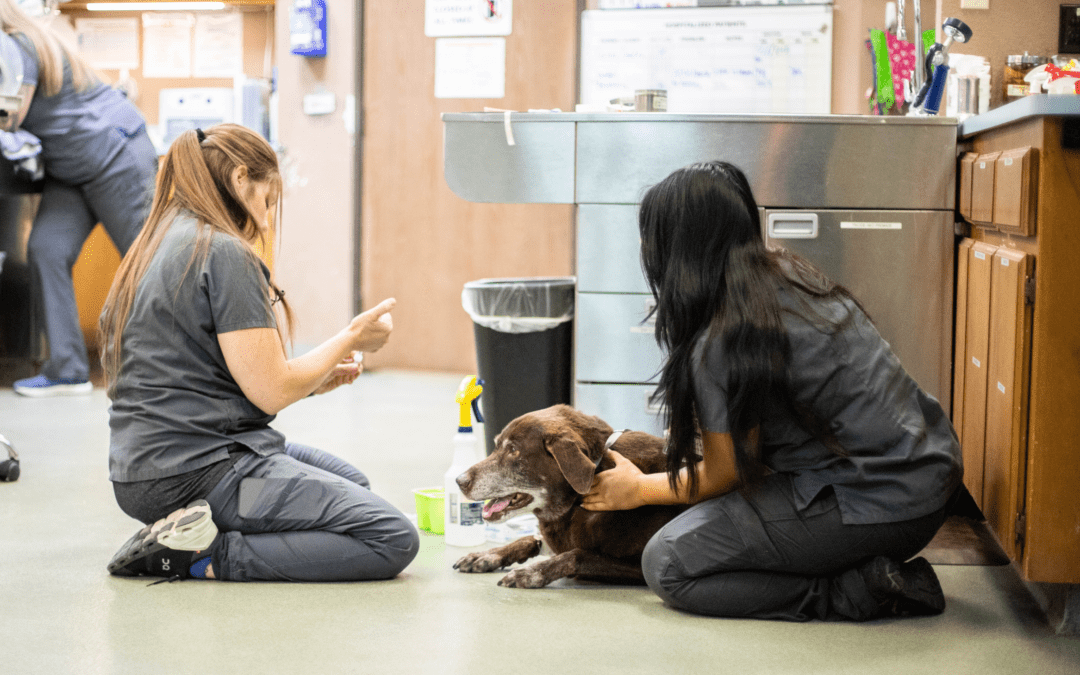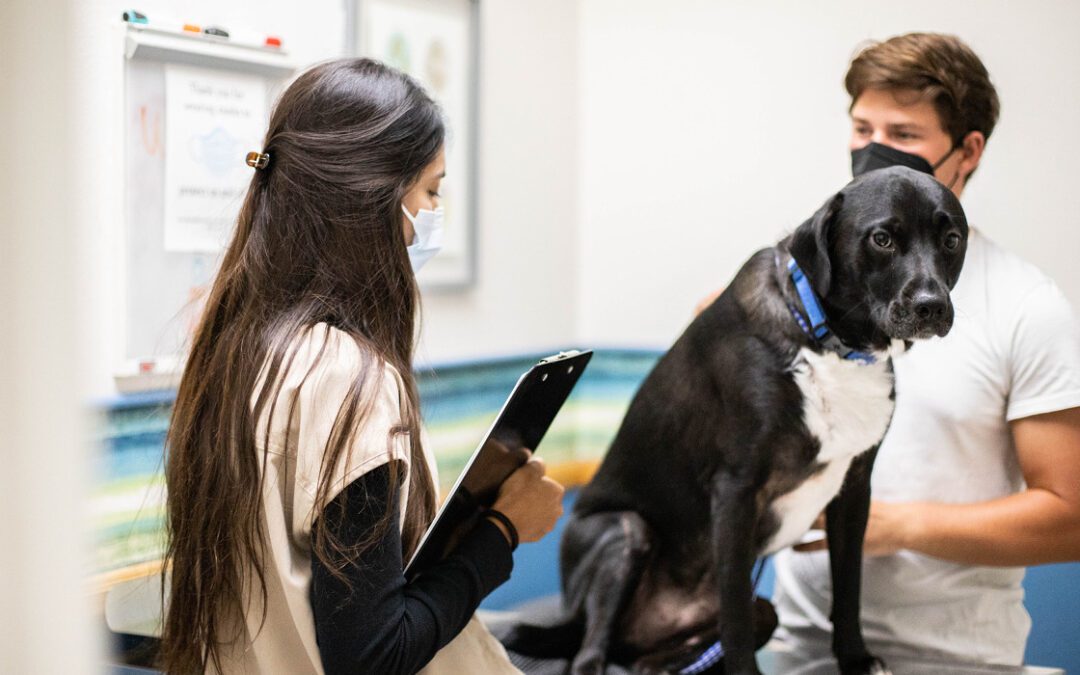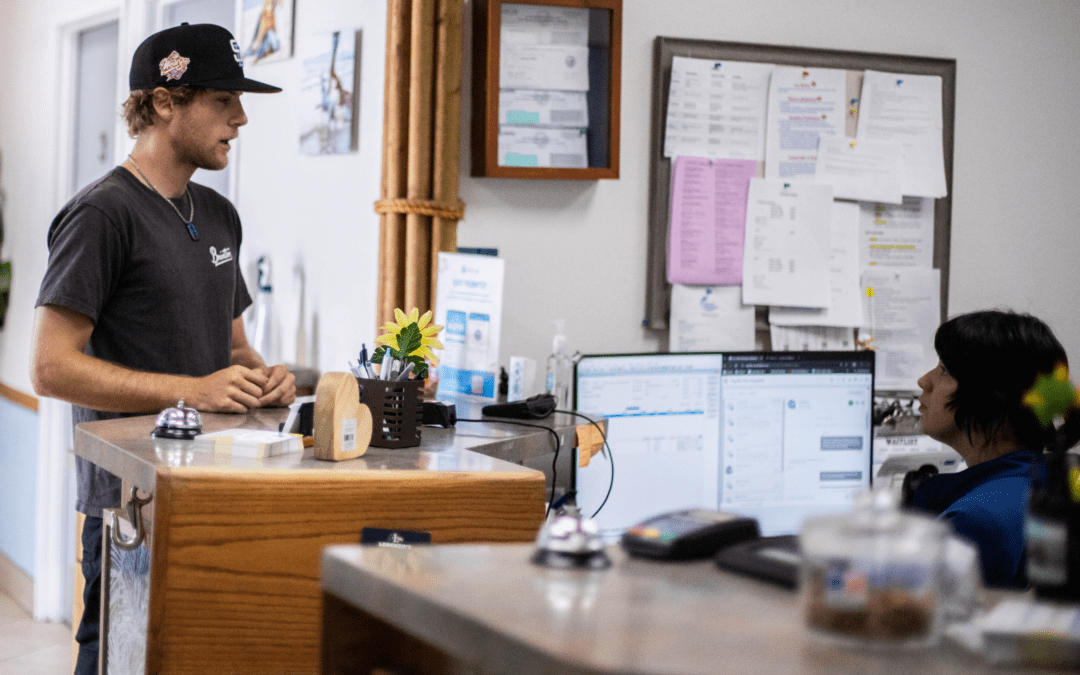Raise your hand if you love getting long Facebook messages from clients. Anyone? Yeah, I didn’t think so. The phone is so much more efficient for your front desk staff, right? It certainly makes your life easier to do it that way.
Raise your hand if you love calling the dentist and sitting on hold listening to Barry Manilow to schedule that root canal you’re dreading. The longer you wait, the more you think about that little bib that you have to wear and the long numb afternoon where you can’t swallow water without dribbling half of it down your chin. If you’re like 1 in 3 people, you hang up. Maybe you put off making the call entirely. We lose a lot of clients this way.
Our unwillingness to embrace new technology when it comes to client communications is nothing new, and it’s certainly not limited to veterinarians. While the rest of the universe has zoomed ahead in figuring out how to optimize ways of getting clients in the door, we remain stuck in 2002, very proud of the fact that we use computers instead of paper books to keep track of appointments.
When it comes to our own medical needs, most of us are held captive by limited choice: we go to who our insurance covers. We put up with the byzantine phone labyrinth at our doctor’s office for two main reasons:
- We don’t have a choice.
- Everyone else out there is just as bad.
Death into the Phone Call
According to a 2017 Salesforce poll, 80% of people use the phone when they need to communicate directly with their doctor. Just 13% use online portals. That number jumps to 35%, however, when it comes to viewing health records and lab tests.
It’s not that patients prefer the phone when booking appointments or talking to the doctor – it’s just the only option that they have. When Salesforce isolated their polling results to millennials, a striking fact emerged: they want to manage their healthcare with their mobile devices. Considering 98% of millennials in the United States own a mobile phone, this shouldn’t surprise anyone, right?
If You Build It, They Will Come
Meeting clients where they are at is a longstanding customer service mantra, yet no one in the healthcare field wants to do it. The trend is clear: you need to get off the landline and onto mobile devices if you want to live up to patient expectations. In veterinary medicine, where clients aren’t limited by insurance and can change clinics at any time, offering multiple conduits for communication is a vital means of client acquisition and retention.
When millennials were polled about how they choose a doctor, what do you think they said? The phone book? Recommendations from friends? What kind of equipment they have on the exam tables? The two criteria that figure in the most prominently:
- Online reviews
- The ability to book online appointments and pay bills
Those two items comprise 75% of the decision-making process.
For 60% of respondents – and we’re talking all ages, now – a primary care doctor who offers a mobile app would be THE deciding factor. Think about that for a minute. Then go get a mobile app.
How Technology Affects Client Perception
If history is any indicator, and it usually is, veterinary trends follow human trends. As clients become more comfortable with the conveniences provided by mobile technologies, they will actively seek veterinarians who do the same. Not only does it make their lives easier to use the communications they are most familiar with, but it also signals that a clinic keeps up with the trends in terms of the medicine you practice as well. Like it or not, your clinic’s choices about how you do or don’t use technology is a key element of your brand.
At the very core, clients are looking to be empowered in their health care for themselves and their pets. The more opportunities a client has to access health care data- we call those access points- the happier they are. Just as importantly, they have better health outcomes. Fortunately for us, technology allows us to effortless provide that, freeing your staff up to do what matters most: tending to the patients in your facility.
Your Quick Response Checklist
If you think this revolution hasn’t already started, you’re not paying attention. Both large corporate practices and small independent clinics are starting to integrate technology into their patient care. The good news is, you still have time to get yours launched ahead of the curve. Here are some key items to get into place:
- Do you have a reputation management plan in place? This can be as simple as a staff member who regularly monitors social media and review sites, or as robust as an outside service who does this work for you.
- Do you have the ability to book appointments online? If you’re balking because you are worried about opening up your calendar online, don’t worry: appointment requests allow you to keep your calendars organized and controlled.
- Do you use text to communicate with clients? A whopping 75% of millennials find it helpful to be texted by businesses with appointment reminders, promotions, and surveys. Don’t underestimate the impact of texting a worried client with a post-op photo of their pet comfortably snoozing in recovery.
That’s just the tip of the iceberg. You can start taking off when you move on to things like telemedicine, AI, and online records, but don’t fret – you’ve got plenty of time to get there.
The important thing is that you start. What’s your technology communications plan?
Jessica Vogelsang, DVM – Founder of pawcurious
Dr. Jessica Vogelsang centers her life around two passions: animals and storytelling. She began pawcurious.com in 2009 as a way to connect with animal lovers around the world and has since become one of the most widely read veterinarians on the web. Dr. Vogelsang covers a variety of topics such as animal health, client communication, resilience, and the power of storytelling to create lasting bonds.







